Étiquette : Bécoulet
Alain Bécoulet: la Science, puissant vecteur de rapprochement entre peuples
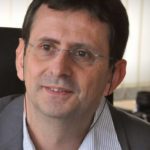
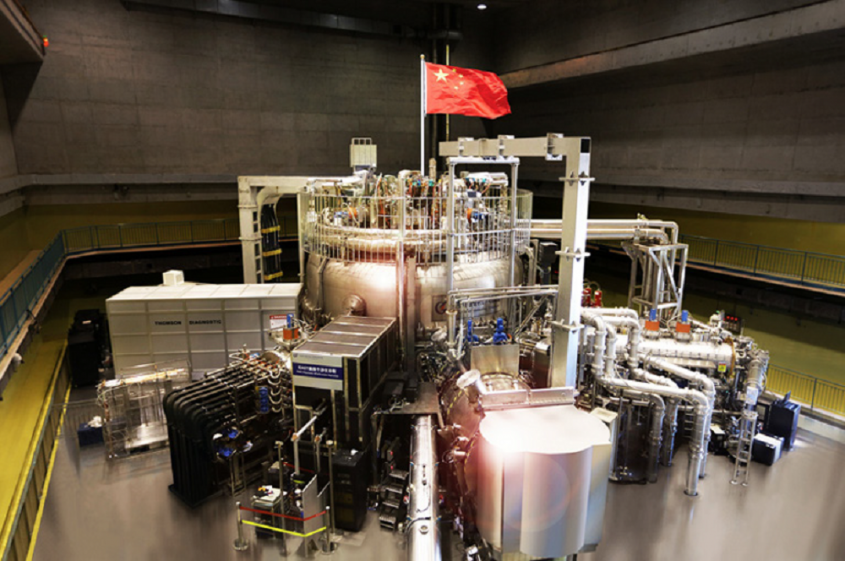
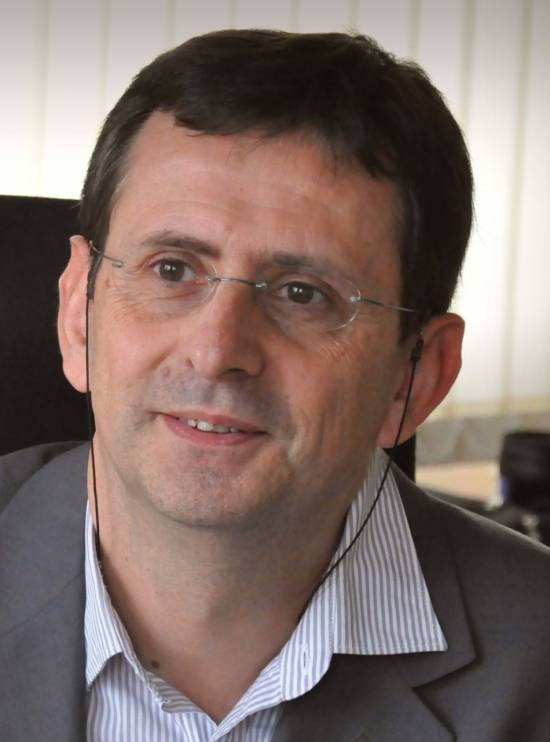
La coopération scientifique entre la France et la Chine dans le domaine du nucléaire civil est très ancienne.
Voici un entretien avec un chercheur qui y participe depuis trente ans, le physicien Alain Bécoulet, ancien directeur de l’Institut de recherche sur la fusion par confinement magnétique (IRFM) du CEA, aujourd’hui directeur du domaine « ingénierie » de l’International thermonuclear experimental reactor (ITER), un tokamak géant en voie d’assemblage à Cadarache, près d’Aix-en-Provence (13).
Au cours de sa longue carrière, Alain Bécoulet a travaillé, avant ITER, sur les tokamaks JET (Culham, Royaume-Uni), DIII-D (San Diego, Californie) et enfin Tore Supra (Cadarache, France).
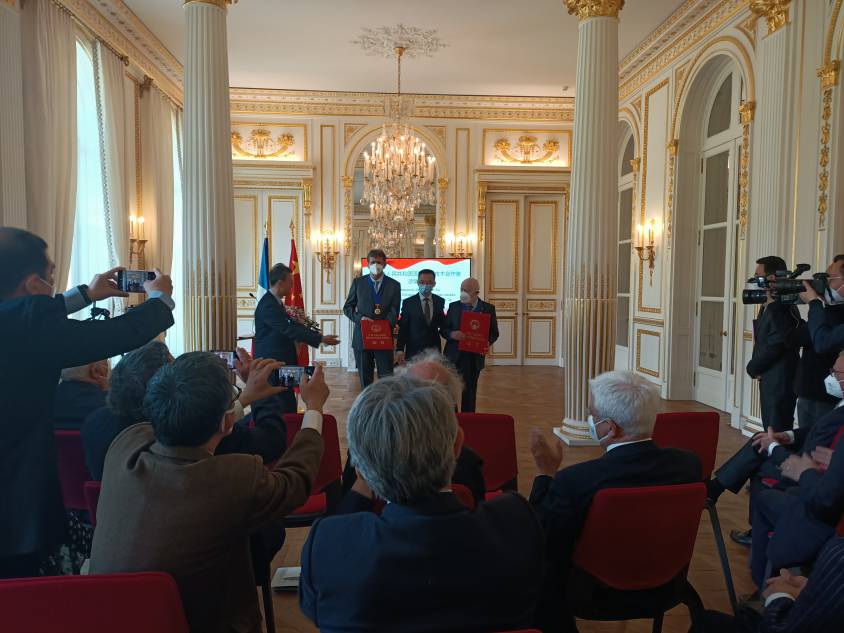
Karel Vereycken : Monsieur Bécoulet, bonjour.
Le 28 mars, lors d’une conférence de presse à Paris, en présence d’Alain Mérieux et de l’ancien président de l’Assemblée nationale Bernard Accoyer, le gouvernement chinois, par la voie de son ambassadeur, a remis son prix de la coopération scientifique et technologique internationale à deux chercheurs français au cœur de la coopération franco-chinoise : le professeur Jacques Caen, hématologue renommé, et vous-même, pour votre travail sur la fusion thermonucléaire dans le cadre du projet ITER.
Coût croissant des énergies fossiles et renouvelables, climat, conflits et croissance démographique. Autant de phénomènes qui interpellent brutalement nos gouvernements sur l’importance de l’énergie. Rappelez-nous brièvement ce qu’est la fusion et en quoi elle apporterait une réponse à ces défis ?
Alain Bécoulet : La fusion de noyaux atomiques légers est le mécanisme qui prévaut au fonctionnement de notre Soleil, et des étoiles en général. C’est une source nucléaire d’énergie virtuellement sûre, propre, décarbonée et très abondante. Si on arrive à la maîtriser, elle entrerait donc tout naturellement en première place des futurs mix énergétiques. Le défi, pour cela, est sa domestication sur Terre, qui entre seulement, avec ITER, dans sa démonstration de faisabilité à l’échelle 1.
Une fois cette étape franchie par ITER dans la deuxième moitié des années 2030, la voie sera ouverte vers des réacteurs électrogènes basés sur le principe de la fusion.
Puisque vous étiez de l’aventure, entre les premiers tokamaks et ceux d’aujourd’hui, quelles innovations ? Les progrès dans la supraconductivité ont-ils contribué à ces avancées ? Quel est l’objectif du tokamak géant ITER par rapport à ses prédécesseurs ?
Le défi est effectivement dans le déclenchement puis le maintien des réactions de fusion dans un « réacteur » de taille raisonnable, c’est-à-dire dans la miniaturisation à l’extrême d’un soleil.
Pour cela il a fallu, et il faut encore, plusieurs décennies non seulement de physique et d’expérimentation sur des « tokamaks » (c’est le nom que l’on donne à ce type de réacteurs) de formes et tailles diverses, mais également de nombreux développements et innovations technologiques.
Vous citez la supraconductivité : elle nous a en effet permis un saut considérable dans la réalisation des aimants continus nécessaires au confinement du milieu extrêmement chaud (une centaine de millions de degrés) dans lequel se passent les réactions de fusion.
La taille du tokamak est ensuite directement liée à la puissance que l’on peut extraire de ce type de réacteur, avec un effet à seuil en deçà duquel on ne peut pas déclencher de réactions. ITER, avec ses 830 m3 de « plasma » (c’est l’état dans lequel est le mélange de réactifs porté à de telles températures) va nous permettre de produire environ 500 MW de puissance fusion.
Un peu comme les missions spatiales, ITER (c’était d’ailleurs un des objectifs fixés par Gorbatchev et Reagan) a su réunir dans un projet commun des pays pas forcément amis. Le partage complet des informations et de la propriété intellectuelle est-il un élément fondamental pour cette coopération gagnant-gagnant ?
ITER est en effet construit par l’Organisation internationale, suite à un traité signé fin 2006 par sept partenaires : Chine, Corée du Sud, Etats-Unis, Inde, Japon, Russie et Union européenne. Cette dernière est le membre-hôte, hébergeant le site de construction à Cadarache, dans le sud de la France. Le traité ITER prévoit un partage complet de la propriété intellectuelle développée lors de la construction et de l’exploitation expérimentale d’ITER entre tous les membres.

Quelles retombées pour l’économie française ?
ITER est construit en France et il est clair que les retombées économiques sont très importantes pour le pays (contrats de construction et de transport, hébergement des personnels et de leur famille…). A ce jour (on est encore à environ cinq ans de la fin de l’assemblage du tokamak), on estime à plus de 4 milliards d’euros ces retombées.
La politique des sanctions et d’embargos ne risque-t-elle pas de nuire à une science dont les progrès, en dernière analyse, profitent à tous? Les 10 millions de pièces nécessaires à l’assemblage d’ITER seront-elles au rendez-vous?
De manière générale, ITER est construit par assemblage des millions de pièces fabriquées et fournies « en nature » par ses membres. Les échanges entre pays sont donc au cœur du maintien du planning de construction. L’assemblage d’ITER est ainsi fortement perturbé depuis deux ans par les effets de la pandémie de Covid-19, qui a non seulement déstructuré la production industrielle partout dans le monde, mais également ralenti et compliqué considérablement les transports.
Toute difficulté politique entre les membres d’ITER est effectivement également de nature à perturber la mise au point de la fusion. La situation de tension actuelle entre la Russie et les autres pays en fait partie. Rappelons cependant qu’ITER n’est pas une « collaboration » internationale, mais bel et bien un traité international.
A ce jour, ce traité n’a pas été questionné par ses membres et l’impact est essentiellement lié à la grande complication des échanges internationaux, dont ITER dépend fortement en effet.
En quoi la Chine contribue-t-elle à ITER ?

La Chine est l’un des signataires du traité ITER et à ce titre, contribue au projet via des fournitures en nature et sa contribution au budget de l’Organisation internationale. Elle a, en parallèle, un programme national de recherche et développement ambitieux et dynamique qui prévoit, comme plusieurs autres membres, de tirer tous les enseignements d’ITER dans le design et la construction des futurs réacteurs.
La France, notamment EDF, n’a-t-elle pas contribué dès le début au développement du nucléaire civil dans ce pays ? Comment a évolué la coopération franco-chinoise dans ce domaine ? Comment a-t-on su créer une confiance mutuelle dans un domaine aussi sensible ?
La coopération franco-chinoise en fusion a déjà plus de trente ans, et je suis d’ailleurs particulièrement fier d’y avoir contribué activement très tôt. A ce stade, elle a été portée par les grands instituts de recherche que sont le CEA d’une part et l’Académie des Sciences de Chine de l’autre. La CNNC (Compagnie nucléaire nationale chinoise) s’est jointe il y a une vingtaine d’années, via son institut SWIP. Les grands industriels du nucléaire commencent à rejoindre la fusion essentiellement depuis l’étape ITER.
Quel rôle avez-vous pu jouer dans ces échanges ?
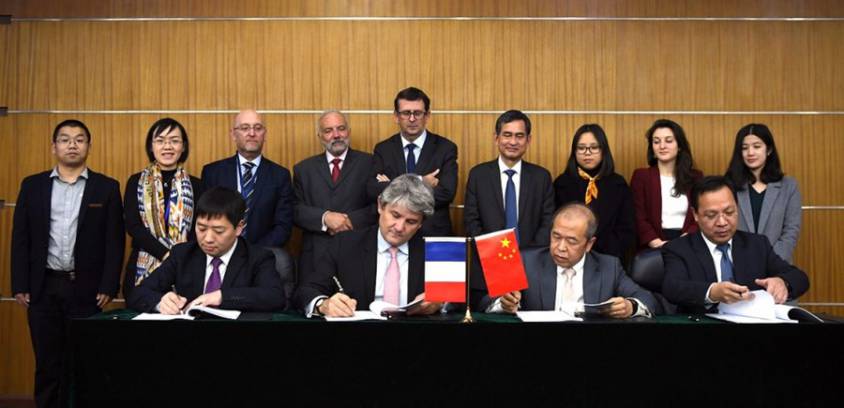
J’ai personnellement contribué au rapprochement de la Chine et de la France en fusion depuis plus de trente ans. Mes premières contributions ont évidemment été purement scientifiques et liées à mes propres activités de recherche, incluant de nombreux échanges dans les deux sens. Ce rôle s’est progressivement développé et amplifié au fur et à mesure du développement de mes responsabilités au CEA et au sein du programme fusion européen (programmes de recherche communs, échanges de matériel, projets communs, etc.), culminant au milieu des années 2010 par la création de SIFFER, le Sino-French Fusion Energy centeR, laboratoire virtuel joignant les forces en fusion du CEA, de l’Académie des Sciences Chinoise et du CNNC, en vue d’accélérer les échanges et la collaboration entre les deux pays. Des investissements significatifs sur les tokamaks des deux pays ont ainsi été réalisés dans des domaines technologiques tels que les composants face au plasma, la robotique d’inspection, les diagnostics, etc.
Racontez-nous un peu l’histoire de Tore Supra (devenu WEST), du projet EAST et des dernières percées obtenues en Chine.
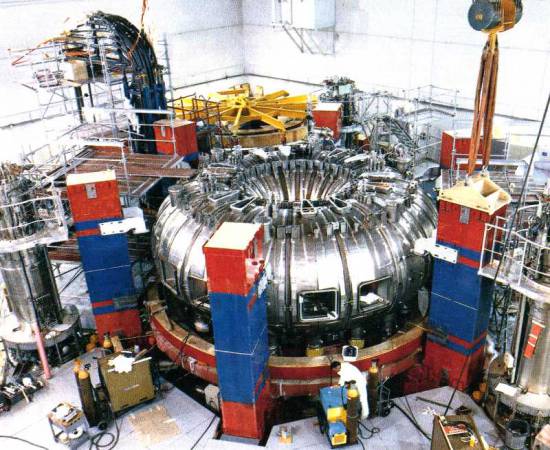
Tore Supra est le premier tokamak, dans les années 1980, à avoir démontré la possibilité d’utiliser la technologie des aimants supraconducteurs pour la fusion. Il a ainsi réellement ouvert la voie technologique vers ITER. Tore Supra a ensuite continué systématiquement la mise au point des autres technologies-clés pour le maintien des conditions de fusion dans un tokamak (injection en continu de puissance, évacuation en continu de la chaleur, contrôle en temps réel…) avec de vrais succès et records mondiaux, dont notamment des plasmas maintenus plus de six minutes à très haute puissance injectée, au début des années 2000. Le tokamak EAST.
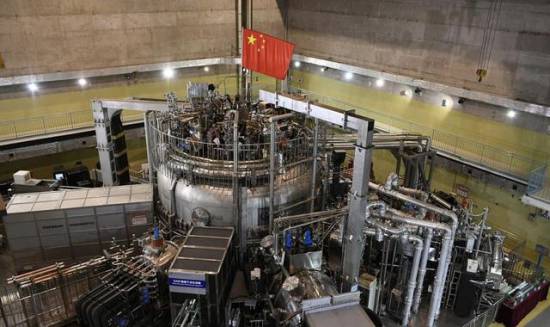
La Chine a voulu très tôt suivre la même voie de recherche, probablement grâce à l’excellente collaboration que nous avions déjà en place. Elle a ainsi conçu et construit le tokamak EAST, sur des concepts très proches de Tore Supra, et de très nombreux échanges ont permis l’émergence rapide d’EAST.
Quand il s’est agi de faire évoluer les technologies de composants face au plasma de Tore Supra (milieu des années 2010), en soutien au programme ITER, la Chine a très largement soutenu le CEA et j’ai voulu d’une certaine manière souligner ce « jumelage » grandissant entre les deux tokamaks en rebaptisant Tore Supra en WEST, combinant le clin d’œil géographique au fait que Tore Supra embarquait ainsi une technologie à base de tungstène, dont le symbole chimique est le W.
Que faut-il faire pour susciter des nouvelles vocations en France ? Comment cela se passe-t-il en Chine ?
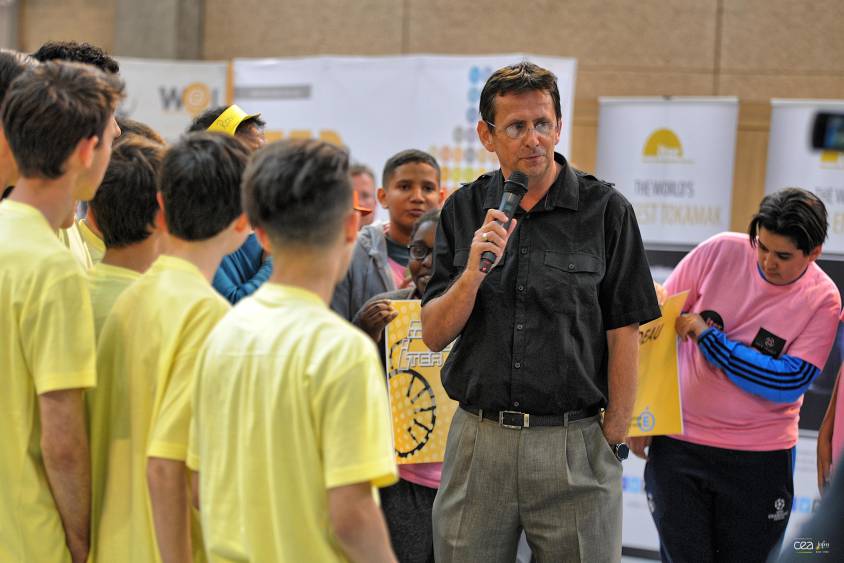
La Recherche en général a besoin des meilleurs talents. Elle se développe ainsi sur un terreau de vocations. Dans le cas de la fusion, le défi est l’un des plus importants auquel l’humanité se soit attaquée. La route est encore assez longue et nécessite un soutien fort de la part des États mais aussi, de plus en plus, des acteurs de l’Energie au sens large, et des investisseurs privés. On voit actuellement un intérêt grandissant de ce côté. Il est de nature à soutenir ces vocations. Ceci est valable en Occident, mais également en Chine.
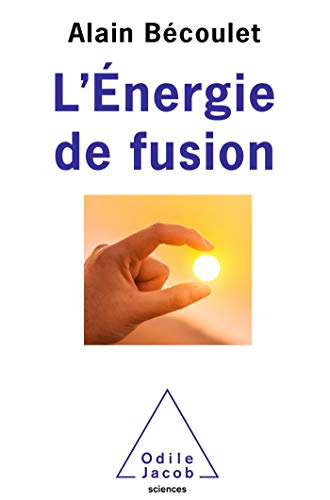
Votre livre, L’énergie de fusion, publié en français en 2019 chez Odile Jacob et déjà traduit en anglais et en néerlandais, sortira bientôt en chinois, c’est un bon signe ?
Ce livre a en effet pour but de sensibiliser le plus largement possible aux recherches en fusion, en « racontant » avec des mots simples quelles sont les avancées scientifiques et techniques déjà acquises et quels sont les défis qu’il reste à relever jusqu’au réacteur.
Il est de nature à susciter de nouvelles vocations, je l’espère, et les retours que j’ai des lecteurs et des éditeurs me font très plaisir.
Comment réagissez-vous au prix que la Chine vous a décerné ?
Comme je l’ai dit dans mon discours, au-delà de l’immense honneur que le gouvernement chinois me fait en me décernant ce prix plus que prestigieux, c’est la recherche en fusion et son caractère totalement ouvert et collaboratif qui sont distingués. Ma conviction professionnelle la plus profonde est que la Science est l’un des vecteurs les plus puissants du rapprochement entre les peuples, et donc de la paix. La volonté de savoir, de connaître, de décoder la Nature, est une source inépuisable et universelle de l’être humain. Je suis particulièrement fier d’y contribuer et très reconnaissant que cela ait été reconnu et salué par le gouvernement chinois au travers de ce prix. Il couronne aussi de très belles rencontres et amitiés qui se sont développées au cours de ces années, et le plaisir à chaque fois renouvelé pour moi des visites en Chine.